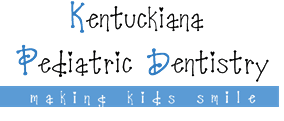ANXIETY-FREE KIDS DENTAL CARE
Our compassionate staff delivers high-quality dental care in a relaxed atmosphere. Everything about our practice is designed to create a comfortable dental experience for your child. We go the extra mile to provide the exceptional care your child deserves while treating every parent like a member of our family.
WHAT TO EXPECT WHEN YOU’RE HERE
Special Care
Our goal is to help children, adolescents and those with special needs achieve optimum oral health. We greatly appreciate the trust you place in us, and care for each child as if we were treating our own.
One-On-One Attention
Each child’s teeth are different. At Kentuckiana Pediatric Dentistry, we emphasize one-on-one attention for each child in order to create a treatment plan that is unique to each patient’s individual dental needs.
Preventive Dentistry
At Kentuckiana Pediatric Dentistry, our goal is to prevent dental issues from arising before it’s too late. We recommend scheduling a check-up appointment every 6 months to ensure your child’s teeth are growing properly with no underlying problems. However, should your child need dental work as a result of cavities, called Restorative Dentistry, we will discuss the options with you to choose what’s best for your individual child.
Tips for Cavity Prevention
- Limit frequency of meals and snacks.
- Encourage brushing, flossing, and rinsing.
- Watch what you drink.
- Avoid sticky foods.
- Make treats part of meals.
- Choose nutritious snacks.
RESTORATIVE DENTISTRY
Restorative dentistry is dental work required as a result of cavities. Kentuckiana Pediatric Dentistry performs all types of restorative dentistry on our patients through the most appropriate method of sedation, or relaxation, for the comfort and safety of your individual child. In a continued effort to provide the best for your child, we offer only tooth-colored fillings.
TYPES OF SEDATION WE OFFER
NITROUS OXIDE SEDATION
ORAL CONSCIOUS SEDATION
GENERAL ANESTHESIA
FAQs
WHAT AGE SHOULD MY CHILD SEE A CHILDREN'S DENTIST?
The AAPD recommends that your child should be seen no later than 6 months after their first tooth erupts from the gum. Your child’s first birthday is an excellent time for their first dental visit. Little teeth need as much attention as “big teeth” to prevent decay and encourage life-long healthy habits.
How to best prepare for your first visit:
Have fun preparing your child for their first visit, like you would their first hair cut or traveling for a trip. Setting the expectation that the experience will be a fun and positive one, will help ease any anxiety your child might feel and increase your chances of an enjoyable visit. Having your forms filled out in advance will help expedite the check-in process and give you more time to ensure your child is excited to meet the doctor versus apprehensive about what’s to come.
HOW OFTEN SHOULD MY CHILD VISIT THE DENTIST?
Generally, your child should see the dentist every 6 months. Tracking oral habits, hygiene, and growth regularly is essential to ensuring we can prevent any arising issues before restorative actions have to be taken.
DOES PEDIATRIC DENTISTRY COST MORE?
Every parent wants the best for their children, and we do too! Our office will make every effort to provide you with the finest care and the most convenient financial options. To accomplish this, we work with you to maximize your insurance reimbursement for covered procedures.Our practice accepts most insurances, including Kentucky Medicaid and KCHIP.
DO I STAY WITH MY CHILD DURING THE VISIT?
We invite you to stay with your child during the initial appointment. Beyond that, we suggest you allow our caring staff to guide your child through the dental experience. Our purpose is to gain your child’s confidence and overcome any apprehension. However, if you’d prefer to join the appointments, you are welcome to do so. For the safety and privacy of all patients, other children who are not being treated should remain in the reception room with a supervising adult.
WHEN SHOULD I START BRUSHING MY CHILD'S TEETH?
Even before your baby’s first tooth appears, we recommend you clean his gums after feedings with a damp, soft washcloth. As soon as his first tooth appears, you can start using a toothbrush. Choose a toothbrush with soft bristles and a small head. You can most likely find a toothbrush designed for infants at your local drugstore. Non-Fluoride toothpaste should be used on children under the age of 3, as fluoride can be dangerous for very young children.
Tips for toddler tooth brushing: Let your child pick out a few toothbrushes with his favorite characters and giving him a choice of which one he wants to use each time. This will give him some feeling of control over the situation. Let your child brush his own teeth first, you will likely have to “help out” to ensure they are thoroughly brushed. Let your child read some children’s books about tooth brushing. Brush your teeth along with your child. Doing it together can make it more appealing.
DOES MY CHILD NEED BRACES?
If your child is age 7 or older, it’s time to visit an orthodontist. The earlier you can get your child in for an examination with an orthodontist, the easier it will be to ensure they start treatment at the right time to obtain the best results on the easiest path.
Patient
Forms
DIRECTIONS
Contact
Us
